I am not a potter, but I am very interested in pottery, particularly the low tech stuff where you win your own clay, process it, mould it into something useful like pot-in-pot coolers and then low temperature fire it without a kiln. Pottery has been around for a very long time, well before earth moving machinery, electric potter’s wheels and gas fired or electric kilns so it is theoretically possible to make your own pottery from scratch. While the ancients may not have had modern equipment they did have knowledge and skills built up over millennia to back them up, but can a mug like myself utterly without pottery making skills do it? That is the question!
Winning the Clay
For some reason you don’t mine clay, or even quarry it – you “win” it and I have spent several years working in an industry that won clay and used it to make terracotta roof tiles so I have seen how it is done on an industrial scale, but how does one do it on a personal level?
I am very fortunate to live in Sydney Australia, at least as far as winning clay is concerned because Sydney is built on a whacking great load of the stuff. The best place to get it is from your own or a friend’s property and I certainly have access to clay from the side of a dam on a friend’s property but you can also win small amounts from cuttings along roads where clay is exposed and around there that is all over the place.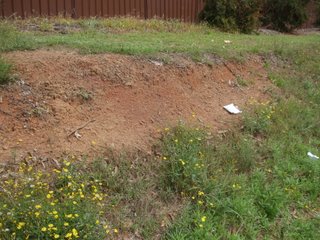
In any of these cases the winning is simple, dig it out of the earth, put it in a bucket or bag and take it home, but it may be you live in an area not so blessed in clayey goodness as Sydney is. Ask around or check out the net for industries in your local area for industries that use clay such as local potteries, brick manufacturers, clay tile or pipe manufacturers as these were generally sited close to their most critical raw material, clay. If all else fails, contact them directly and see if you can access to their clay pits or even get hold of some clay that they have already won so that you can process it. Consulting geological maps of your area through a local museum or university may also give you some hints as t where clay may be found in your area. 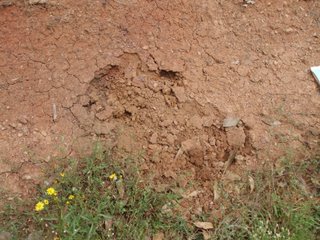
If you think you may have found some clay (referred to as a clay body), take a small sample and wet it, it should feel slippery, then work a small piece with your fingers until it becomes malleable, then form it into a small cylinder and bend it. It should be able to bend without cracking. The final test would, of course, be to fire the cylinder and see if it hardens into a piece of pot, but if this is not an option grab some and process it anyway and see what you come up with.
Processing the clay
As it comes out of the ground, clay will have mixed in with it roots and other vegetation, worms, ants etc and small to large rocks, all of which are not conducive to making good pots so these must be removed by processing, leaving us with (hopefully) good quality clay.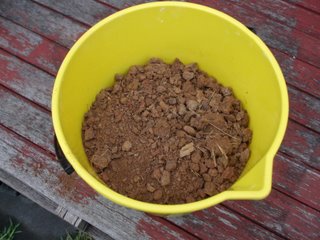
1. Break your clay up, particularly if it has come from a primary body and exists as large lumps, cut it into 25mm cubes. If you have found clay that has been near the surface for some time and has been weathered, it will tend to be in the form of dried smaller lumps which is easier to deal with.
2. Dump your clay lumps into a bucket or other watertight receptacle and cover the clay with water and leave it overnight. The water will soften the clay and allow it to be removed from the sticks and stones and other extraneous material.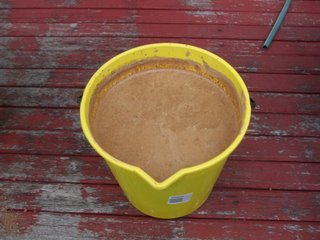
3. Now the fun bit! Get your hands into it and push the clay and water through your hands so that the clay turns into a water slurry. Keep working until it seems the water will take no more clay, and lumps of unslurried clay and rocks will sink to the bottom of the bucket.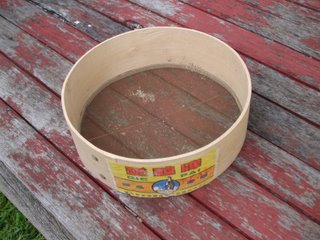
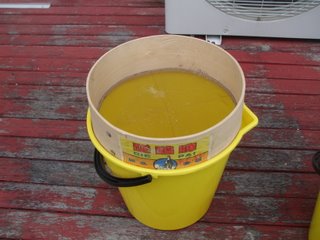
4. Obtain a second bucket and place a fine sieve in the top of it. I got mine in an Asian grocery shop and it does the job well. You do want the sieve to be fine (80 mesh at least) and if this is not available you may wish to raid your life partner’s stock of pillow slips or tea towels or other fine cloth.
5. Pour the clay slurry slowly through the sieve or cloth into the second bucket. The larger impurities will start to clog the sieve pretty quickly so just move your fingers around against the sieve, to help the slurry pass through. Once all the slurry has been sieved you may want to add water to the original bucket of clay lumps to see if any more clay can be extracted, eventually you will just be left with rocks and other debris which can be discarded.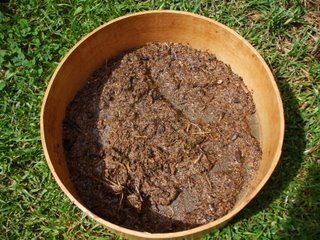
6. Allow the bucket of sieved slurry to sit for at least 24 hours. This will allow the clay particles to settle so that the clear water can be removed with a siphon or sucked out with a turkey baster and discarded. The longer you leave the slurry to sit, the more water you can remove this way and the quicker will be the final dewatering process.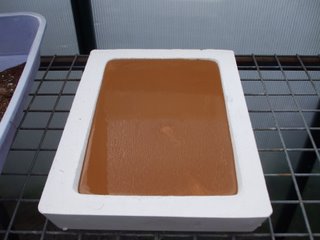
7. Once you have removed as much water as you want to, the last stage of the dewatering is to use a plaster of Paris bat to suck out the remaining water (for directions on making a plaster bat, see another article). Just pour the slurry into the well cast in the bat and leave it to dry. The plaster will absorb all the remaining water and the clay will come away from the edges and you will be able to lift it our cleanly.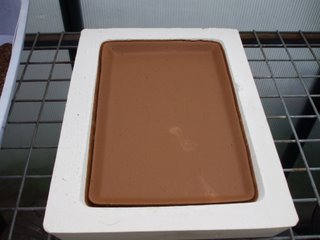
The plaster bat can be reused indefinitely, but make sure that it is given time to dry out again between uses, to facilitate this I keep mine in the glass house, which lets it dry out pretty quickly for the next use.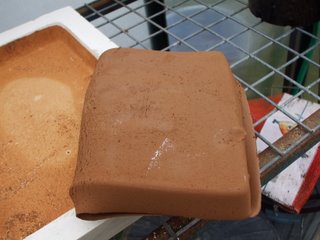
The clay at this stage should look pretty good, but will require a little more processing before it can be used, it must be “wedged” which is nothing to do with underwear and will be covered in a different article.



